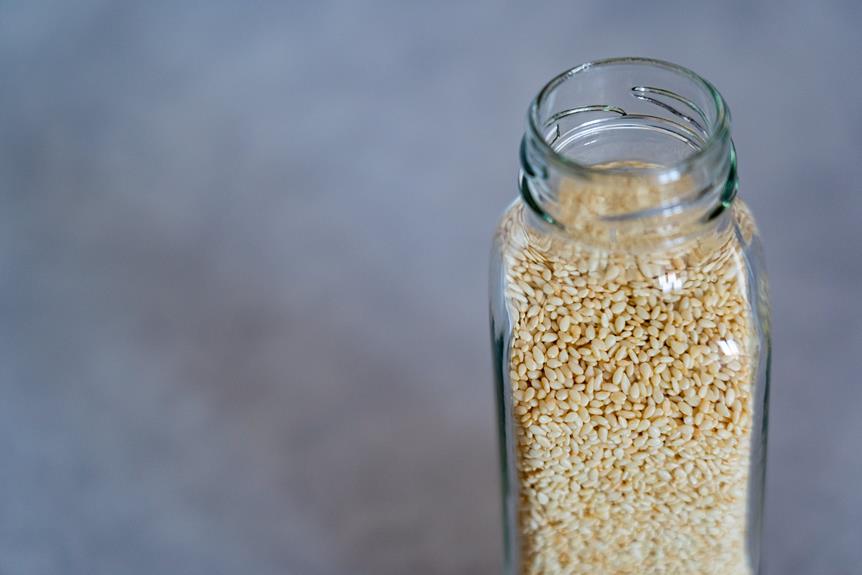If you're a homemaker looking to make your cooking practices more eco-friendly, there are plenty of simple steps you can take. By choosing sustainable ingredients and incorporating more plant-based meals, you can reduce your carbon footprint and contribute to a greener lifestyle.
Here are 15 eco-friendly cooking tips to help you get started.
- Choose local and organic ingredients whenever possible. Supporting local farmers and reducing pesticide use is better for the environment.
- Reduce food waste by planning your meals and shopping with a list. Only buy what you need and use leftovers creatively.
- Opt for reusable and eco-friendly alternatives to single-use plastics. Switch to glass containers, stainless steel straws, and silicone baking mats.
- Cook in bulk and freeze leftovers for quick and convenient meals later on. This reduces energy consumption and saves time.
- Use energy-efficient appliances and cookware. Look for the ENERGY STAR label when purchasing new kitchen equipment.
- Conserve water by rinsing fruits and vegetables in a bowl instead of running water. Use a dishwasher only when it's full.
- Compost your food scraps to reduce landfill waste. It's a great way to create nutrient-rich soil for your garden.
- Grow your own herbs and vegetables. Even if you don't have a backyard, you can use containers or vertical gardens.
- Choose sustainable seafood options by referring to the Monterey Bay Aquarium's Seafood Watch guide. This helps protect marine ecosystems and supports sustainable fishing practices.
- Cook with seasonal ingredients. This not only ensures freshness but also reduces the carbon footprint associated with transporting out-of-season produce.
- Incorporate more plant-based meals into your cooking repertoire. Reducing meat consumption has a significant impact on reducing greenhouse gas emissions.
- Use natural cleaning products in your kitchen. Avoid harsh chemicals that can harm the environment and your health.
- Reduce your reliance on processed foods. Not only are they often packaged in plastic, but they also require more energy to produce.
- Opt for cooking methods that require less energy. Use a pressure cooker, slow cooker, or toaster oven instead of your main oven whenever possible.
- Get creative with leftovers. Transform them into new dishes to avoid food waste and add variety to your meals.
By implementing these eco-friendly cooking tips, you can make a positive impact on the environment while enjoying delicious and sustainable meals. Start small and make gradual changes to create a greener kitchen.
Choosing Sustainable Ingredients
When choosing sustainable ingredients for eco-friendly cooking, it's important to prioritize locally sourced and organic products. By buying locally, you not only support your community but also reduce the carbon footprint associated with transportation. Look for labels that indicate the origin of the ingredients, or simply ask the vendors directly. This way, you can ensure that the produce, meat, and seafood you purchase are fresh, in-season, and haven't traveled long distances.
When it comes to seafood, it's crucial to focus on ethical fishing practices. Look for certifications like the Marine Stewardship Council (MSC) or the Aquaculture Stewardship Council (ASC), which guarantee that the fish or shellfish have been responsibly caught or farmed. These certifications ensure that the seafood you consume isn't depleting the ocean's resources or causing harm to marine life.
Choosing sustainable ingredients is an important step towards reducing our impact on the environment and supporting local communities. By making conscious choices in our cooking, we can contribute to a more sustainable and eco-friendly food system.
Energy-Efficient Cooking Appliances
If you want to cook in a more eco-friendly way, consider investing in energy-efficient appliances. These appliances are designed to use less energy while still providing the same level of functionality as traditional appliances. Look for the Energy Star label when choosing energy-efficient appliances, as this indicates that they meet strict energy efficiency guidelines.
In addition to using energy-efficient appliances, there are other ways to save energy while cooking. For example, using lids on pots and pans can help trap heat and cook food more quickly. Using the right-sized cookware for your stove burners can also maximize energy efficiency.
Creating a green kitchen design can further optimize your cooking space's energy efficiency. Positioning appliances strategically to minimize heat loss, using natural lighting to reduce the need for artificial lighting, and incorporating proper ventilation to remove cooking odors and moisture are all important aspects of a green kitchen.
Reducing Food Waste in the Kitchen
Reduce Food Waste in Your Kitchen
Minimize food waste in your kitchen by following these simple strategies. By preventing food spoilage and using leftovers efficiently, you can make a significant impact on reducing food waste. Here are three practical tips to help you on your eco-friendly journey:
- Plan your meals:
Take a few minutes to organize your meals for the week. Check what ingredients you already have and make a shopping list for the ones you need. This way, you'll avoid buying unnecessary items and reduce the chances of them going to waste.
- Store food properly:
Make sure your fridge is set at the right temperature to keep perishable items fresh for longer. Use airtight containers or reusable wraps to store leftovers, fruits, and vegetables. This will help prevent spoilage and maintain their quality.
- Get creative with leftovers:
Instead of letting leftovers go to waste, find inventive ways to use them. Transform yesterday's roast chicken into a delicious sandwich or turn leftover vegetables into a hearty soup. By using leftovers efficiently, you not only reduce waste but also save money.
Eco-Friendly Cooking Utensils and Tools
If you're looking to make your cooking practices more eco-friendly, consider using sustainable utensils and tools like bamboo kitchenware. Bamboo is a renewable resource that grows quickly, making it a great choice for those who want to be more environmentally conscious. Not only are bamboo utensils, cutting boards, and bowls durable, but they're also biodegradable, meaning they'll naturally break down over time without harming the environment.
By opting for bamboo kitchenware, you can reduce your reliance on plastic and contribute to a greener planet. Another way to make your cooking practices eco-friendly is by choosing compostable packaging. Many companies now offer compostable alternatives to traditional plastic packaging. These materials are typically made from plant-based materials like cornstarch or sugarcane, which are biodegradable and can be added to your compost pile.
Incorporating Plant-Based Meals
Adding More Plant-Based Meals to Your Cooking Repertoire
Consider incorporating more plant-based meals into your cooking routine to make your culinary practices more eco-friendly. Not only will this help reduce your carbon footprint, but it also offers numerous nutritional benefits and allows you to explore creative recipes.
Here are three ways you can start incorporating plant-based meals into your cooking routine:
- Experiment with different grains and legumes: Try exploring the world of quinoa, brown rice, lentils, and chickpeas. These ingredients aren't only rich in fiber and protein but also provide a variety of essential nutrients. You can make a delicious quinoa salad or a hearty lentil curry to add some excitement to your plant-based meals.
- Embrace colorful vegetables and fruits: Including a wide range of colorful vegetables and fruits in your meals ensures that you're getting a diverse array of vitamins, minerals, and antioxidants. You can experiment with vibrant veggie stir-fries, roasted vegetable medleys, or fresh fruit salads to add a burst of flavor and nutrition to your plate.
- Get creative with plant-based proteins: Explore the world of tofu, tempeh, and seitan. These plant-based proteins can be marinated, grilled, or used as a substitute for meat in various recipes. Trying a flavorful tofu stir-fry or a tempeh taco can help you discover new and delicious ways to enjoy plant-based proteins.
Conclusion
By implementing these eco-friendly cooking tips, you can make a significant difference in reducing your carbon footprint while enjoying delicious meals.
Choose sustainable ingredients, use energy-efficient appliances, and reduce food waste.
Every small step counts in creating a green haven of culinary delights that will make Mother Earth jump for joy!







